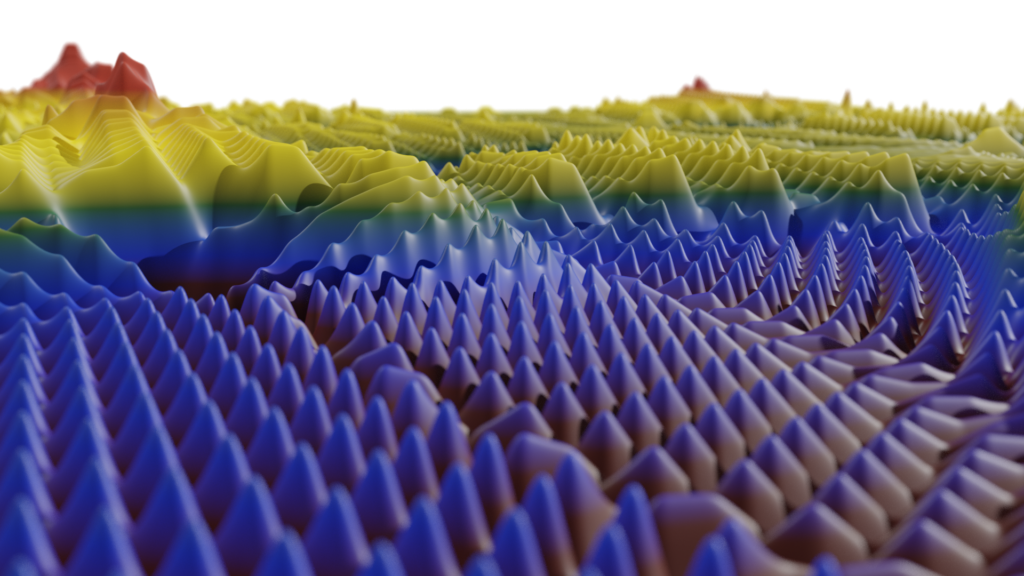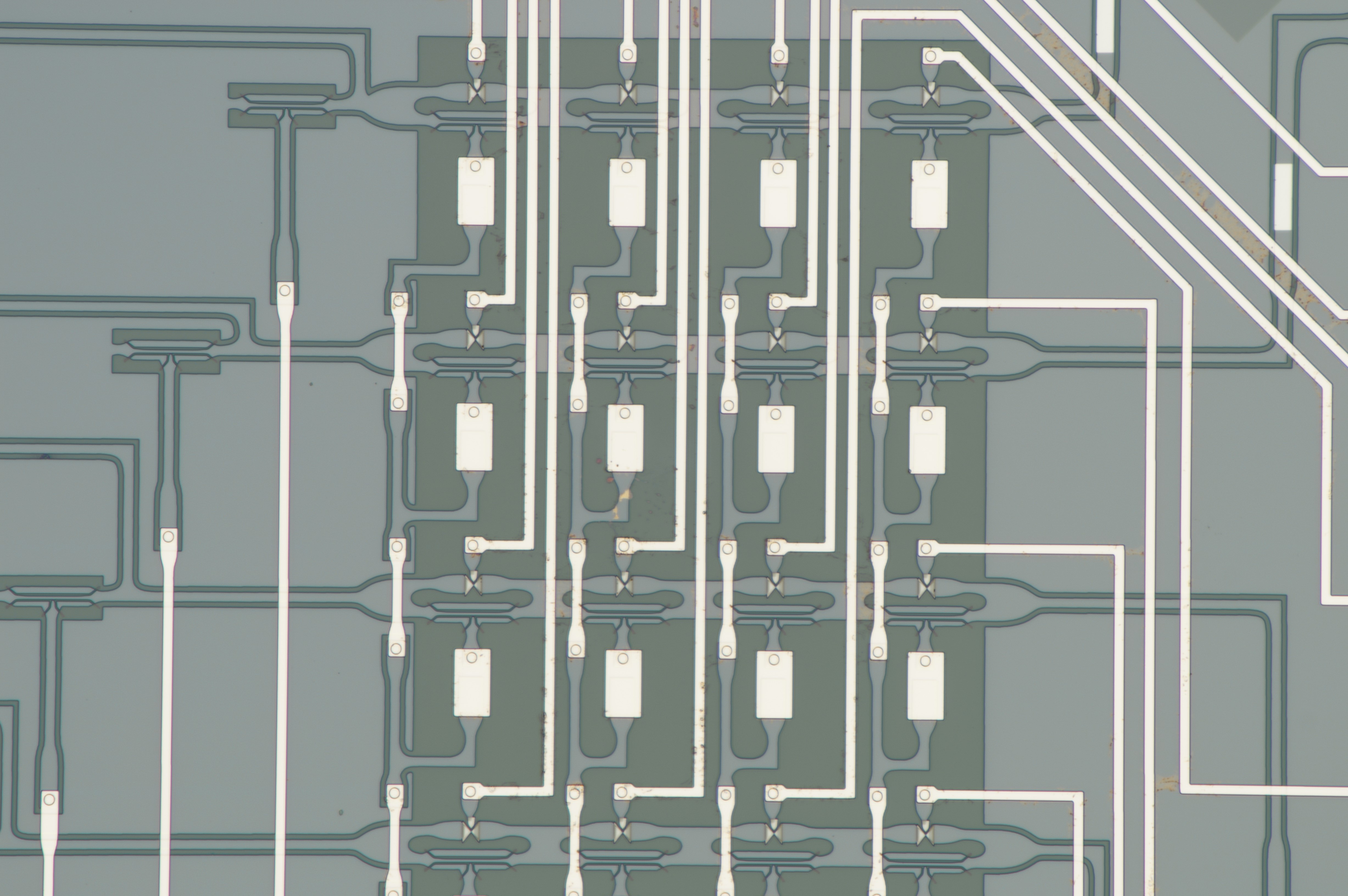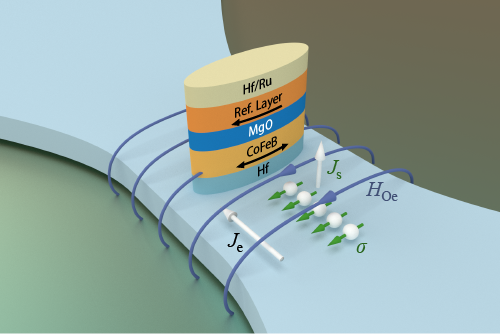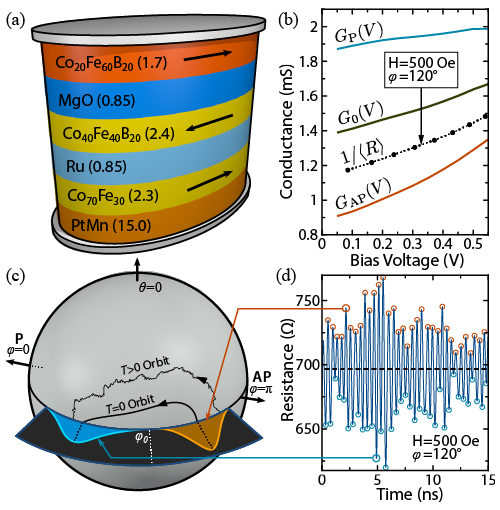Hardware-Based Reservoir Computing

We are exploring using Superconducting systems for reservoir computing, in both the quantum and classical cases. More papers should be appearing soon.
Publications
LCG Govia, GJ Ribeill, GE Rowlands, HK Krovi, TA Ohki Quantum reservoir computing with a single nonlinear oscillator arXiv:2004.14965 (2020)
Cryogenic Magnetic Memory & Architectures


and nanocryotron switch.
The spin-Hall effect devices mentioned below continue to function well at low temperatures, unlike their two-terminal analogues. We have demonstrated error rates below 1 in 106 for operation at temperatures of 3-4K.
We have also created small arrays (4×4) where these spin-Hall effect elements are driven by nanocryotron superconducting switches developed at MIT. This simple memory architecture can be used as the non-volatile main memory for superconducting logic schemes based on Josephson junctions.
Also we have created some of the first truly precessional MRAM devices that can be switched with write pulses are short as 100 ps with better reliabilities than have been shown before.
Publications
Minh-Hai Nguyen, Guilhem J Ribeill, Martin V Gustafsson, Shengjie Shi, Sriharsha V Aradhya, Andrew P Wagner, Leonardo M Ranzani, Lijun Zhu, Reza Baghdadi, Brenden Butters, Emily Toomey, Marco Colangelo, Patrick A Truitt, Amir Jafari-Salim, David McAllister, Daniel Yohannes, Sean R Cheng, Rich Lazarus, Oleg Mukhanov, Karl K Berggren, Robert A Buhrman, Graham E Rowlands, Thomas A Ohki Cryogenic memory architecture integrating spin Hall effect based magnetic memory and superconductive cryotron devices , Sci Rep 10, 248 (2020).
Graham E Rowlands, Minh-Hai Nguyen, Sriharsha V Aradhya, Shengjie Shi, Colm A Ryan, Robert A Buhrman, Thomas A Ohki Nanosecond reversal of three-terminal spin Hall effect memories sustained at cryogenic temperatures arXiv preprint arXiv:1909.10613 (2019)
GE Rowlands, CA Ryan, L Ye, L Rehm, D Pinna, AD Kent, TA Ohki A cryogenic spin-torque memory element with precessional magnetization dynamics Sci Rep 9, 803 (2019).
Fast Switching Using the Spin-Hall Effect

Magnetization reversal can be induced by spin-currents resulting from a transverse spin accumulation in certain materials possessing a strong spin-Hall effect. The geometry of spin injection enables novel devices, including three terminal magnetic tunnel junctions (MTJs) first fabricated by L. Liu et al.. At Cornell, we continued to develop devices based on this effect with the goal of possibly supplanting traditional current-perpendicular-to-plane MTJs that suffer from drawbacks given a shared path for read and write operations.
Publications
G.E. Rowlands, S. V. Aradhya, S. Shi, E.H. Yandel, J. Oh, D.C. Ralph, and R.A. Buhrman Nanosecond magnetization dynamics during spin Hall switching of in-plane magnetic tunnel junctions, Appl. Phys. Lett. 110, 122402 (2017)
S. V. Aradhya, G.E. Rowlands, J. Oh, D.C. Ralph, and R.A. Buhrman Nanosecond-Timescale Low Energy Switching of In-Plane Magnetic Tunnel Junctions through Dynamic Oersted-Field-Assisted Spin Hall Effect, Nano Lett. 16, 5987 (2016)
J. Park, G.E. Rowlands, O.J. Lee, D.C. Ralph, and R.A. Buhrman Macrospin modeling of sub-ns pulse switching of perpendicularly magnetized free layer via spin-orbit torques for cryogenic memory applications, Appl. Phys. Lett. 105, 102404 (2014)
Spin-Torque Oscillators

It has been known for roughly a decade that a magnetic layer subject to a continuous DC spin-torque can, under certain conditions, undergo persistent magnetization auto-oscillations at frequencies of many GHz. In nanostructures with a large tunneling magnetoresistance (TMR) one can acheive frequency tunable oscillations with powers approaching 1μ. These spin-torque oscillators (STOs) have proven difficult to analyze for two primary reasons. First, their dynamics are highly nonlinear in nature. Second, the magnetic volumes of these oscillators are small enough that the magnetization trajectories are highly susceptible to thermal fluctuations. The combination of these two properties gives rise to a non-trivial microwave generation linewidth profile. My work has focused on expanding the frameworks used to analyze these stochastic non-linear dynamics.
Publications
G. E. Rowlands, J. A. Katine, J. Langer, J. Zhu, I. N. Krivorotov Time Domain Mapping of Spin Torque Oscillator Effective Energy, Phys. Rev. Lett. 111, 087206 (2013)
G.E. Rowlands and I. Krivorotov, Magnetization dynamics in a dual free-layer spin-torque nano-oscillator, Phys. Rev. B, 86, 1-8 (2012)
Spin-Torque Magnetic Memory

Before the advent of spin-orbit torque memories the field was predominantly focused on switching magnetic elements via the “standard” spin-transfer torque effect. As part of the larger UCLA effort funded by DARPA we focused on pushing energy consumption lower and devices speeds faster with novel materials stacks and multi-polarizer structures.
Publications
M.T. Rahman, a. Lyle, P. Khalili Amiri, J. Harms, B. Glass, H. Zhao, G.E. Rowlands, J.A. Katine, J. Langer, I.N. Krivorotov, K.L. Wang and J.P. Wang, Reduction of switching current density in perpendicular magnetic tunnel junctions by tuning the anisotropy of the CoFeB free layer, J. Appl. Phys., 111, 07C907 (2012)
J. Zhu, J.A. Katine, G.E. Rowlands, Y.-J. Chen, Z. Duan, J. Alzate, P. Upadhyaya, J. Langer, P. Amiri, K. Wang and I.N. Krivorotov, Voltage-Induced Ferromagnetic Resonance in Magnetic Tunnel Junctions, Phys. Rev. Lett., 108, 1-5 (2012)
P. Amiri, Z. Zeng, P. Upadhyaya, G.E. Rowlands and H. Zhao, Low Write-Energy Magnetic Tunnel Junctions for High-Speed Spin-Transfer-Torque MRAM, IEEE Dev. Letters, 32, 2010-2012 (2011)
Z.M. Zeng, P. Khalili Amiri, G.E. Rowlands, H. Zhao, I.N. Krivorotov, J.-P. Wang, J.a. Katine, J. Langer, K. Galatsis, K.L. Wang and H.W. Jiang, Effect of resistance-area product on spin-transfer switching in MgO-based magnetic tunnel junction memory cells, Appl. Phys. Lett., 98, 072512 (2011)
H. Zhao, a. Lyle, Y. Zhang, P.K. Amiri, G.E. Rowlands, Z. Zeng, J. Katine, H. Jiang, K. Galatsis, K.L. Wang, I.N. Krivorotov and J.-P. Wang, Low writing energy and sub nanosecond spin torque transfer switching of in-plane magnetic tunnel junction for spin torque transfer random access memory, J. Appl. Phys., 109, 07C720 (2011)
P. Upadhyaya, P.K. Amiri, A.a. Kovalev, Y. Tserkovnyak, G.E. Rowlands, Z. Zeng, I.N. Krivorotov, H. Jiang and K.L. Wang, Thermal stability characterization of magnetic tunnel junctions using hard-axis magnetoresistance measurements, J. Appl. Phys., 109, 07C708 (2011)
P.K. Amiri, Z.M. Zeng, J. Langer, H. Zhao, G.E. Rowlands, Y. Chen, I.N. Krivorotov, J. Wang, H.W. Jiang, J.A. Katine, Y. Huai, K. Galatsis and K.L. Wang, Switching current reduction using perpendicular anisotropy in CoFeB–MgO magnetic tunnel junctions, Appl. Phys. Lett., 98, 112507-112507 (2011)
G.E. Rowlands, T. Rahman, J.A. Katine, J. Langer, A. Lyle, H. Zhao, J.G. Alzate, A.a. Kovalev, Y. Tserkovnyak, Z.M. Zeng, H.W. Jiang, K. Galatsis, Y.M. Huai, P.K. Amiri, K.L. Wang, I.N. Krivorotov and J. Wang, Deep subnanosecond spin torque switching in magnetic tunnel junctions with combined in-plane and perpendicular polarizers, Appl. Phys. Lett., 98, 4-6 (2011)
D.E. Nikonov, G.I. Bourianoff, G.E. Rowlands and I.N. Krivorotov, Strategies and tolerances of spin transfer torque switching, J. Appl. Phys., 107, 113910 (2010)